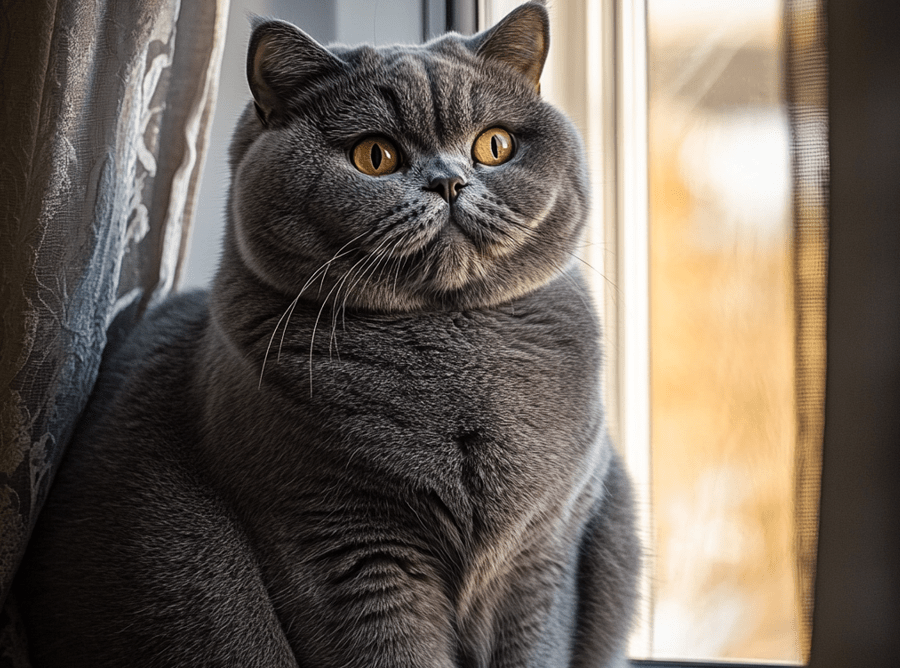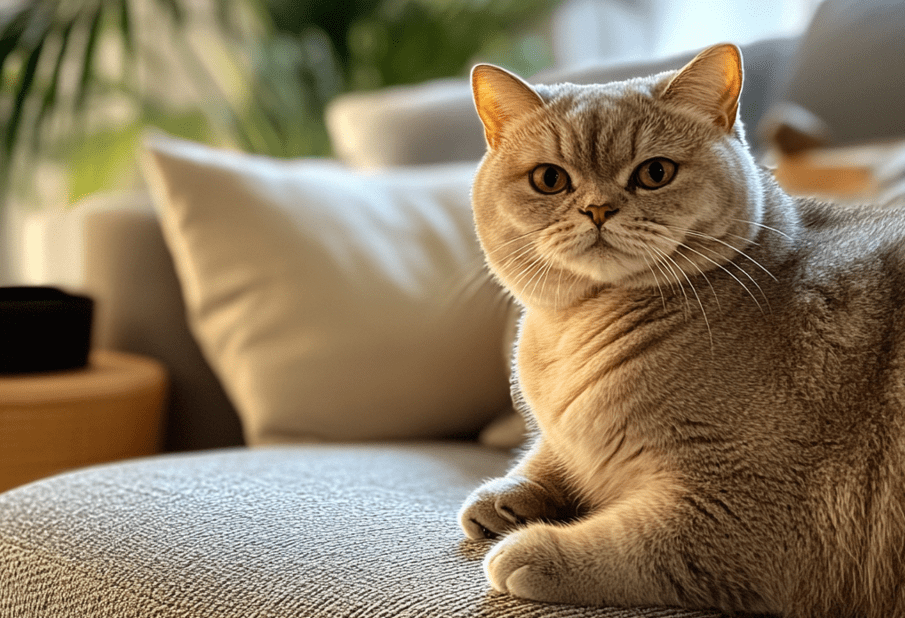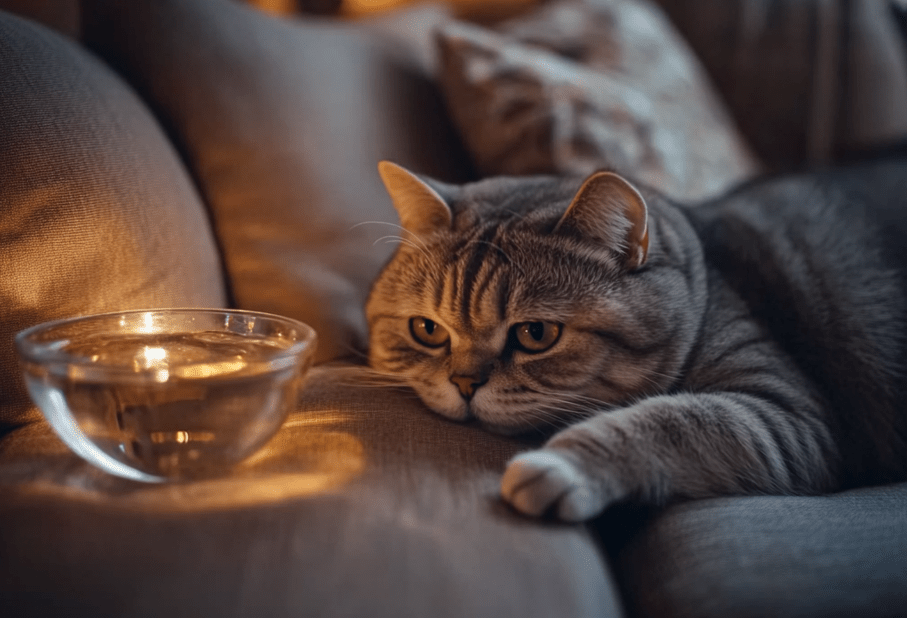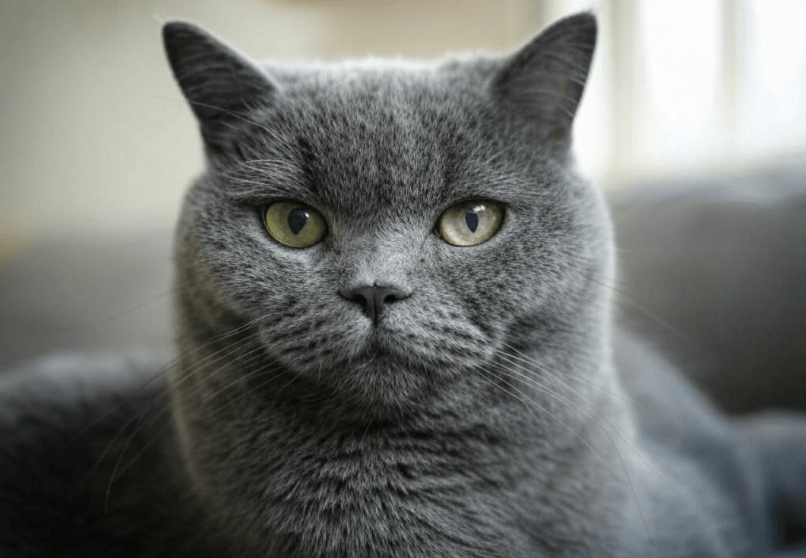
British Shorthair Cats, with their plush, dense coats and charming teddy-bear-like appearance, are a favorite among cat owners. However, maintaining their luxurious fur requires proper care, including occasional bathing. A common question among owners is, how often to bathe British Shorthair cats to keep them clean without compromising their skin and coat health? This comprehensive guide explores the ideal bathing frequency, techniques, products, and tips to ensure your British Shorthair stays healthy, comfortable, and happy. Whether you’re a new or experienced owner, this article provides everything you need to know about bathing your feline friend.
Why Bathing Matters for British Shorthair Cats
British Shorthairs have a short, dense, double-layered coat that is naturally low-maintenance compared to long-haired breeds. Their coat consists of a sleek topcoat and a thick undercoat, which traps dirt, dander, and loose hair. While these cats are excellent self-groomers, bathing plays a key role in their care for several reasons:
Removes Dirt and Debris: Bathing cleans areas your cat can’t reach, such as the back or underbelly.
Reduces Shedding: A bath can loosen and remove excess fur, especially during shedding seasons like spring.
Controls Dander: Bathing minimizes dander, which is helpful for allergy sufferers.
Prevents Skin Issues: Regular cleaning prevents oil buildup that can lead to irritation or infections.
Enhances Coat Health: Bathing with the right products distributes natural oils, keeping the coat shiny.
However, over-bathing can strip essential oils, leading to dry skin and a dull coat. Finding the right balance is crucial.
How Often Should You Bathe Your British Shorthair?
The ideal bathing frequency for a British Shorthair depends on several factors, including their lifestyle, coat condition, and health. Here are general guidelines:
Average Indoor British Shorthair: Bathe every 6–8 weeks (approximately 4–6 times per year). This frequency keeps their coat clean without over-drying their skin.
Outdoor or Active Cats: If your British Shorthair spends time outdoors or gets dirty frequently, bathe every 4–6 weeks to remove dirt and potential allergens.
Shedding Seasons: During spring and fall, when shedding peaks, consider bathing every 4–5 weeks to help remove loose hair and reduce hairballs.
Skin Conditions or Allergies: Cats with specific skin issues (e.g., dermatitis) or those in allergy-prone households may need more frequent baths (every 2–4 weeks), but only under veterinary guidance.
Kittens or Seniors: Kittens and elderly British Shorthairs may need less frequent baths (every 8–12 weeks) due to sensitive skin or mobility issues, unless they get soiled.
Key Note: Always consult your veterinarian if you’re unsure about bathing frequency, especially for cats with medical conditions or sensitive skin.
Factors That Influence Bathing Frequency
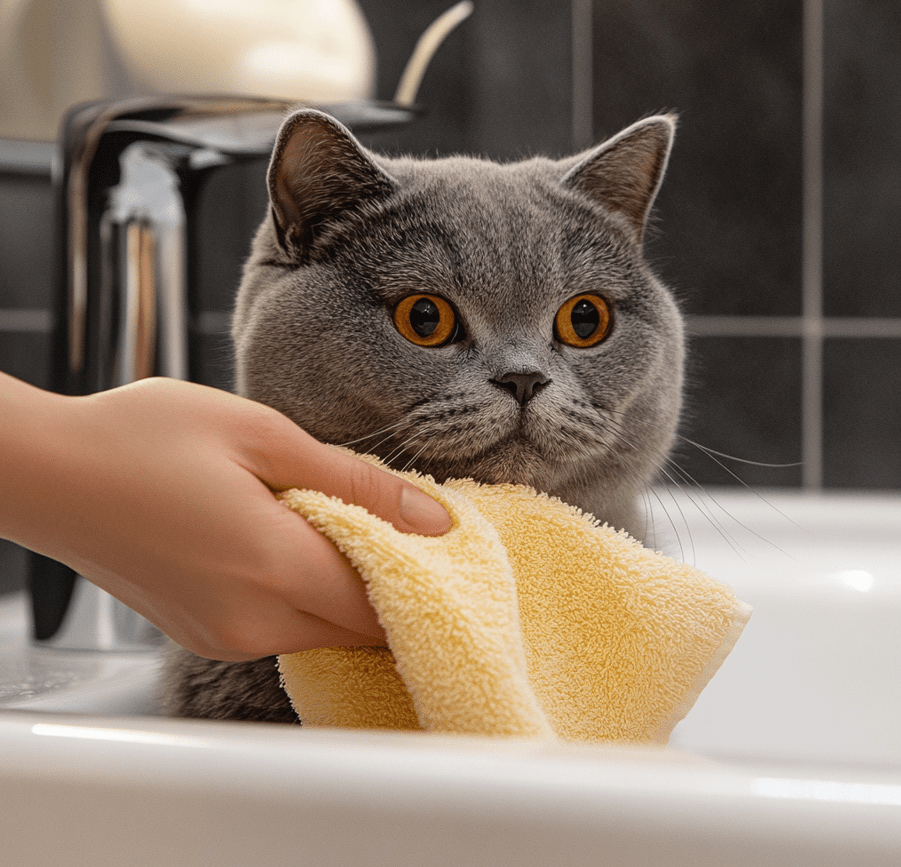
Several factors determine how often to bathe British Shorthair cats:
Lifestyle: Indoor cats require less frequent baths than those who roam outdoors and encounter dirt or allergens.
Coat Condition: Cats with oily coats or dander buildup may need more regular baths.
Shedding Patterns: Increased shedding in spring or fall may warrant slightly more frequent baths.
Health Issues: Skin conditions, fleas, or allergies may require specialized bathing schedules prescribed by a vet.
Owner Allergies: Bathing can reduce dander for owners with allergies, potentially increasing frequency.
Cat’s Tolerance: Some British Shorthairs dislike water, so bathing should be minimized to avoid stress.
How to Bathe Your British Shorthair: Step-by-Step Guide
Bathing a British Shorthair requires preparation and patience to ensure a stress-free experience. Follow these steps:
1. Gather Supplies
-
Cat-safe shampoo (preferably hypoallergenic or oatmeal-based)
-
Conditioner (optional, for coat softness)
-
Non-slip mat for the tub or sink
-
Towels (at least two)
-
Pitcher or handheld sprayer for rinsing
-
Brush or comb for pre-bath grooming
-
Treats for positive reinforcement
2. Prepare Your Cat
-
Brush First: Use a slicker brush (e.g., Safari Self-Cleaning Slicker Brush) to remove loose hair and prevent matting. This also reduces the amount of fur in the bath.
-
Trim Nails: Clip your cat’s nails to minimize scratching during the bath.
-
Choose a Calm Time: Bathe when your cat is relaxed, such as after a meal or nap.
3. Set Up the Bathing Area
-
Place a non-slip mat in a sink or tub to provide traction.
-
Fill with 3–4 inches of lukewarm water (not hot, as it can dry out skin).
-
Keep all supplies within reach to avoid leaving your cat unattended.
4. Bathe Your British Shorthair
-
Introduce Water Gradually: Use a pitcher or sprayer to wet your cat’s body, avoiding the face and ears.
-
Apply Shampoo: Dilute cat-safe shampoo with water (per instructions) and lather gently, focusing on the body, legs, and underbelly.
-
Rinse Thoroughly: Ensure all shampoo is rinsed out to prevent skin irritation.
-
Condition (Optional): Apply a cat-safe conditioner for extra coat softness, then rinse completely.
-
Clean the Face: Use a damp cloth or pet-safe wipe to gently clean the face, avoiding the eyes and ears.
5. Dry Your Cat
-
Wrap your cat in a towel and gently pat dry to absorb excess water.
-
Use a second towel or a low-heat pet dryer (if your cat tolerates it) to dry the coat fully.
-
Keep your cat in a warm, draft-free area until completely dry.
6. Reward and Groom
-
Offer treats and praise to make bathing a positive experience.
-
Brush the coat again to smooth it and distribute natural oils.
Tip: If your British Shorthair resists bathing, start with short sessions and gradually increase their comfort with water.
Best Products for Bathing British Shorthair Cats

Choosing the right products is essential for safe and effective bathing. Here are top recommendations:
1. TropiClean Hypo-Allergenic Shampoo
Why It’s Great: Gentle, soap-free formula ideal for British Shorthairs with sensitive skin. Cleans without stripping natural oils.
Best For: Regular baths and cats prone to allergies.
Price Range: $10–$15
2. Burt’s Bees for Cats Dander Reducing Shampoo
Why It’s Great: Made with natural ingredients like oatmeal and aloe vera, it reduces dander and soothes skin.
Best For: Owners with allergies or cats with dry skin.
Price Range: $8–$12
3. Earthbath Oatmeal & Aloe Cat Shampoo
Why It’s Great: Moisturizes and soothes while cleaning, perfect for maintaining a healthy coat.
Best For: Cats with dry or itchy skin.
Price Range: $12–$18
4. Vet’s Best Waterless Cat Bath
Why It’s Great: A no-rinse foam for cats that hate water, using natural ingredients like neem oil and oatmeal.
Best For: Kittens, seniors, or water-averse cats.
Price Range: $10–$15
Caution: Never use human shampoos or products with harsh chemicals, as they can irritate your cat’s skin.
Common Mistakes to Avoid When Bathing British Shorthairs

Bathing Too Often: Frequent baths (more than every 4–6 weeks) can dry out the skin and coat unless medically necessary.
Using Hot Water: Hot water strips oils and causes discomfort; always use lukewarm water.
Incomplete Rinsing: Leftover shampoo or conditioner can cause irritation or itching.
Forcing the Process: Rushing or forcing a bath can stress your cat and make future baths harder.
Neglecting Pre-Bath Brushing: Skipping brushing leads to matting and more hair in the bath.
Using Human Products: Human shampoos are too harsh for cats and can cause skin issues.
Alternatives to Traditional Bathing
If your British Shorthair dislikes water or has specific needs, consider these alternatives:
Waterless Shampoos: Foam or spray products like Vet’s Best Waterless Cat Bath clean without rinsing.
Grooming Wipes: Pet-safe wipes (e.g., Earthbath Grooming Wipes) clean the coat and reduce dander between baths.
Dry Shampoo Powders: Sprinkle-on powders absorb oil and dirt, brushed out afterward.
Regular Brushing: Daily brushing with a tool like the FURminator reduces the need for frequent baths by removing loose hair and debris.
Tip: Use alternatives sparingly and ensure products are cat-safe to avoid irritation.
How to Make Bathing Enjoyable for Your British Shorthair
Bathing can be stressful for British Shorthairs, but these tips can make it a positive experience:
Start Young: Introduce kittens to water early to build lifelong comfort.
Use Positive Reinforcement: Offer treats, praise, or playtime after bathing.
Keep Sessions Short: Aim for 5–10 minutes to avoid overwhelming your cat.
Stay Calm: Your cat will sense your energy, so remain relaxed and patient.
Create a Routine: Consistent bathing schedules help your cat adjust over time.
Use a Familiar Space: Bathe in a sink or tub your cat already knows to reduce anxiety.
Understanding Your British Shorthair’s Coat
The British Shorthair’s coat is short, dense, and plush, with a double-layered structure:
Topcoat: The outer layer is sleek and protective, giving the cat its smooth appearance.
Undercoat: The thick undercoat provides insulation and contributes to the plush texture.
This coat is naturally self-cleaning to an extent, thanks to the cat’s grooming habits. However, bathing supports coat health by removing trapped dirt, dander, and loose hair that self-grooming can’t address.
When to Seek Professional Grooming or Veterinary Advice
While most British Shorthairs can be bathed at home, professional help may be needed in certain cases:
Severe Matting: Tight mats require a groomer’s expertise to avoid skin injury.
Skin Conditions: Persistent redness, flaking, or sores may indicate allergies or infections needing veterinary care.
Behavioral Resistance: If your cat refuses baths, a professional groomer can handle the process safely.
Medical Needs: Cats with skin conditions or fleas may require medicated shampoos prescribed by a vet.
Look for groomers experienced with short-haired breeds and veterinarians familiar with feline dermatology.
Additional Tips for British Shorthair Coat Care
Bathing is just one part of coat care. Complement it with these practices:
Regular Brushing: Brush 2–3 times per week (daily during shedding seasons) with a slicker or deshedding tool to reduce loose hair.
Healthy Diet: Feed high-quality food rich in protein, omega fatty acids, and vitamins to support skin and coat health.
Hydration: Ensure fresh water is available to prevent dry skin.
Flea Prevention: Use vet-recommended flea treatments to avoid skin irritation.
Environmental Cleaning: Vacuum and wash bedding regularly to reduce dander and allergens.
Conclusion
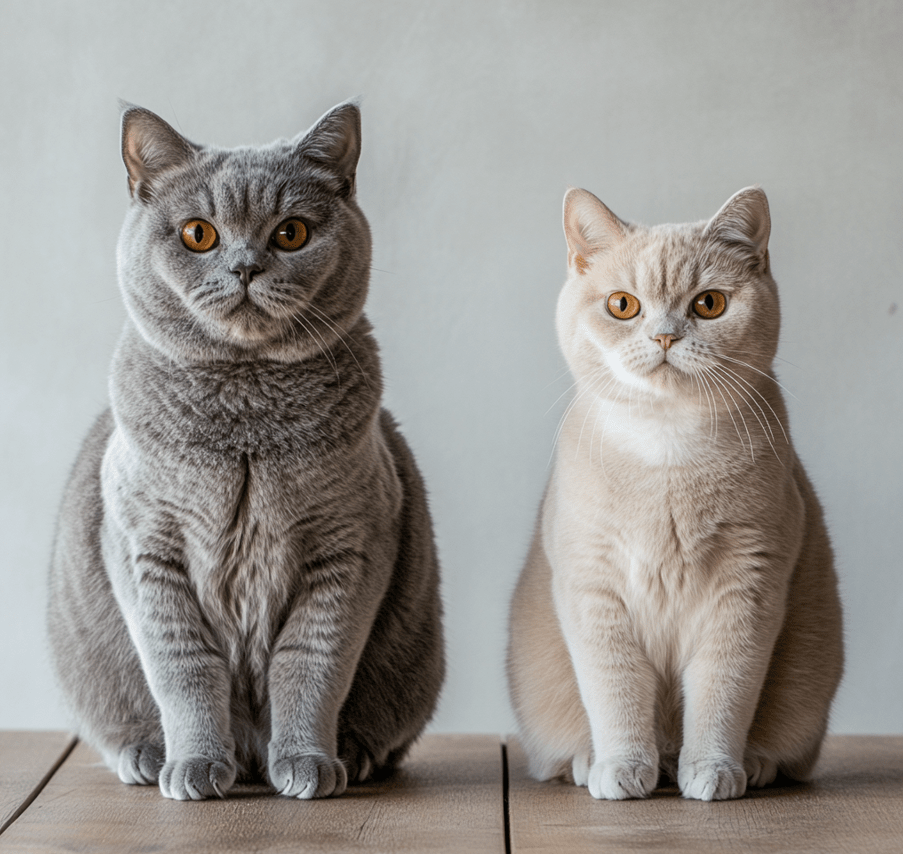
Knowing how often to bathe British Shorthair cats is key to maintaining their iconic plush coat while keeping them comfortable and healthy. For most indoor British Shorthairs, bathing every 6–8 weeks is sufficient, with adjustments for outdoor cats, shedding seasons, or specific health needs. By using cat-safe products like TropiClean Hypo-Allergenic Shampoo, following proper bathing techniques, and complementing baths with regular brushing and a healthy diet, you can ensure your British Shorthair’s coat stays shiny and free of issues. This guide provides all the tools and insights you need to make bathing a stress-free part of your cat’s care routine, strengthening your bond with your feline friend.

